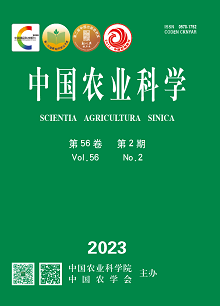【Background】 Circadian rhythm is a common natural phenomenon undergoing in the biological world. With the change of day-night cycle, there are plenty of diverse reactions and changes taking place in living cells. So does it in animals, circadian rhythm affects the metabolism and physiological function inside the body, and further affects the growth, production, and reproductive of animals. Milk is the popular and near-perfect food in the world. On account of technological limitation, the knowledge on milk is just rested on the nutrition, ignored the physicochemical property and physiological function, especially physicochemical property and physiological function of day and night milk responding to circadian rhythm. 【Objective】 Through the research on the physical and chemical characteristics and physiological function of milk in day and night, it was proposed to collect milk according to the physiological function of milk in different periods, which could lay a theoretical basis for the classification, processing and scientific drinking of milk in day and night. 【Method】 This research collected night milk (5:00, produced from 21:00 to 5:00) and day milk (13:00, produced from 6:00 to 13:00) to detecte milk nutrients composition and fatty acids composition by lipidomics. The tiny molecular composition were investigatued by metabonomics and physicochemical properties antioxidation ability, such as superoxide dismutase (SOD), glutathione peroxidase (GSH-Px), gluathione reductase (GR), malondialdehyde (MDA), and metabolism related hormones, such as melatonin (MT), growth hormone (GH), triiodothyronine (T3), insulin (INS) and glucagon, as well as immune factors, such as immune globulin A (IgA), immune globulin G (IgG), tumor necrosis factor-α (TNF-α), interleukin-1β (IL-1β), interleukin-6 (IL-6), interferons-γ (IFN-γ), heat shock protein 70 (HSP70), heat shock protein 90 (HSP90) etc. 【Result】 The milk fat, protein, lactose, and total milk solids were not different between night milk and day milk, but the small molecules, metabolites, lipids, hormones and cytokines differed between day milk and night milk. Night milk was differ from day milk in physicochemical property, for antioxidant activity and immunity activity of night milk were significant high than that of day milk. The content of MT and IFN-γ in night milk were markedly higher than those in day milk, and the content of MDA, heat shock protein (HSP70, HSP90) were significantly increased. The result of metabolomics revealed that there were 36 differential metabolites were detected between night-milk and day-milk. Except 3 of them in night-milk were lower than that of day-milk, the rest 33 in night-milk were higher than that of day-milk. These metabolites were belonging to carbohydrate (such as dihydroxyacetone phosphate, D-glucose 6-phosphate, D-lactose, 2-ethoxyethanol, dihydroxyacetone, acetyl phosphate, acamprosate, alpha-D-glucose, D-galacturonic acid, raffinose, D-sorbitol, cis-aconitate, etc.), lipid (such as DL-α-hydroxybutyric acid, cis-9-palmitoleic acid, stearidonic acid, myristoleic acid, eicosapentaenoic acid, cholic acid, tridecylic acid, myo-inositol, DL-2-aminoadipic acid, etc.), amino acids (such as L-citrulline, D-ornithine, D-proline, taurine, N6-acetyl-L-lysine, N-acetylneuraminic acid, lys-leu, L-alanine, etc; N6-methyl-L-lysine, etc.) and other aromatic compounds (such as S-methyl-5'-thioadenosine, 2'-O-methylcytidine, 2'-deoxyuridine, etc.). Lipidomics analyses showed a total of 21 lipid classes and 1 094 lipid species were detected in the milk samples. The majority of the lipid species were TGs (379), accounts for 34%. These lipids included triglycerides (TG), phosphatidylcholine (PC), phosphatidylethanolamine (PE), phosphatidylserine (PS), phosphatidylinositol (PI), sphingomyelin (SM), ceramide (Cer), O-acyl-ω-hydroxy fatty acid (OAHF), and diacylglycerol (DAG) categories. The composition of the lipids was very different between night milk and day milk. 【Conclusion】 Based on these differents, this research put forward a strategic method on milk classifying, processing, selling and drinking, in an attempt to meet the demands of people at different period and physiological status. This could make full use of the milk physiological property and better serve for human health at the time of providing nutrition and better serve the health of human beings.









